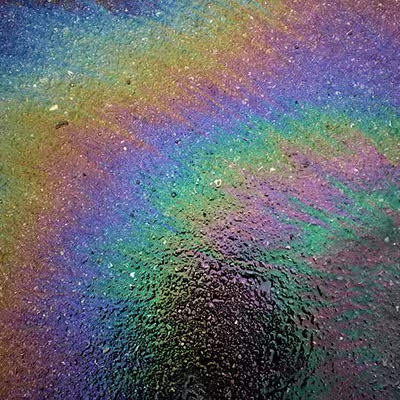Why Do You See Colorful ‘Rainbow’ Patches On A Wet Road?
If you’ve ever driven or walked on a wet road, you’ve likely noticed colorful, oil-like patches that seem to shimmer in a rainbow of colors. These “rainbow” patches are a common sight, but what causes them? Understanding the science behind these colorful displays can be both fascinating and enlightening. This article will delve into the reasons why you see colorful ‘rainbow’ patches on a wet road and explain the phenomenon in detail.
The Science Behind Rainbow Patches on Wet Roads
The appearance of colorful ‘rainbow’ patches on wet roads is primarily caused by a phenomenon known as thin-film interference. When oil or fuel spills on a wet surface, it creates a thin layer or film on top of the water. The thickness of this film varies, and light waves reflecting off both the top and bottom surfaces of the film interfere with each other. Depending on the thickness of the oil layer and the angle at which light hits it, different colors of light are reflected, creating the rainbow effect you see.
Thin-Film Interference Explained
Thin-film interference occurs when light waves reflect off the different surfaces of a thin layer—like an oil slick on water. Some light reflects off the top surface of the oil, while other light waves penetrate the oil, reflect off the water surface beneath it, and then emerge back into the air. When these two sets of light waves overlap, they interfere with each other. This interference can amplify certain colors and cancel out others, leading to the vivid colors observed in the oil slick.
Why Does This Happen More on Wet Roads?
On a dry road, oil or fuel spills don’t create the same rainbow effect because there’s no water layer to enhance the thin-film interference. Water acts as a reflective surface that magnifies the interaction between light waves and the oil film. The combination of water and oil is what creates the vibrant rainbow effect, as the water enhances the reflective properties of the oil film, making the colors more visible.
The Role of Light and Angle
The angle of light hitting the oil film also plays a crucial role in the appearance of these colorful patches. During daylight, sunlight hits the road at various angles, causing the reflected light to interfere in different ways, resulting in the array of colors seen. At certain angles, some colors become more prominent, which is why the rainbow effect may appear more intense or change as you move.
Is It Just Oil?
While oil and fuel are the most common culprits behind these rainbow patches, other substances can also create similar effects. Any substance that forms a thin film on the surface of water can produce thin-film interference. However, due to the prevalence of oil and fuel spills on roads, they are usually responsible for this phenomenon.
Practical Implications of Rainbow Patches
Beyond their aesthetic appeal, these rainbow patches are a sign of oil or fuel on the road, which can be hazardous. Oil slicks reduce tire traction, increasing the risk of skidding, especially on wet surfaces. This is why it’s important to be cautious when you see these patches, as they indicate the presence of a slippery substance that can affect vehicle control.
So, why do you see colorful ‘rainbow’ patches on a wet road? It all comes down to the fascinating physics of thin-film interference, where oil or fuel creates a thin layer on top of water, reflecting light in a way that produces a spectrum of colors. While these patches might be visually intriguing, they also serve as a reminder to exercise caution on the road.






